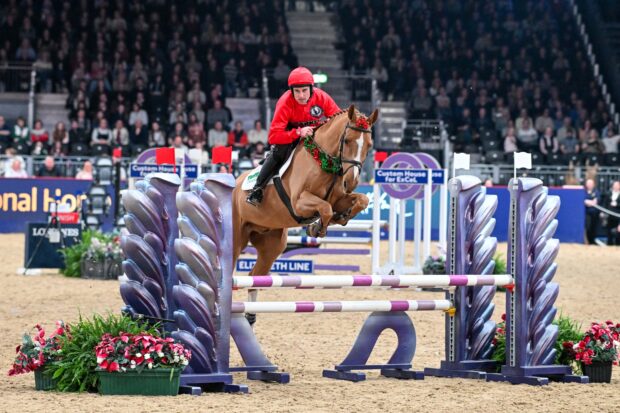Data is the key to good ground, is the message from a world leader in equestrian and sports pitch turf.
Richard Hayden, of Hayden Turfcare, is responsible for the iconic arenas of Hickstead and Dublin, Leopardstown and numerous other racecourses, and the natural turf gallops at Coolmore and Ballydoyle.
His company also created the turf for the World Cup pitch at Zenit Arena, St Petersburg, where England played its World Cup semi-final match on Wednesday evening.
“Out of all the sports, equestrian is the most difficult because the horse can’t talk, the message is being transferred through the rider,” Mr Hayden told H&H.
This week, Irish rock legend Paul Simon is playing at the RDS Arena in Dublin to a crowd of thousands with a stage on top of the grass on which the world’s best horses will be competing in less than three weeks.
The solution?
“There’s lights under the stage,” said Mr Hayden. “The whole arena is protected for concerts and we have lighting systems growing the grass 24 hours a day.”
He explained that the area involved for horse trials makes it extremely difficult for organisers to water and in many cases, it simply is not feasible — or advisable —— to attempt to water it all.
“It is so difficult, as a horse owner as well, I have seen both sides,” he said.
“People turn up, see all the yellow grass and say ‘why aren’t they watering?’
“But unless the venue is set up with an extraction licence, it isn’t feasible.”
An extraction license allows the holder to pump up a set volume of water out of natural water courses, such as rivers and streams.
Mr Hayden added that grass goes through two stages in drought — wilting (dormancy) and death.
“When the grass is yellow, it is protecting itself. It will only go into dormancy once,” he said.
“When grass is dead, it is dead. If it dies, you have to accept that and do something about it.”
He advised organisers to “prepare for next year” when considering their ground care ahead of this year’s events.
Mr Hayden also warned if they bring grass out of the dormancy stage through watering ahead of a competition, it may die if the drought continues, which could lead to problems next season.
While it may be possible for certain areas, such as a showjumping arena, to be watered, Mr Hayden explained the volume of water needed to make any difference on a full-length cross-country track.
“If you can go the whole hog [with watering], that’s absolutely brilliant, but look at the statistics,” he added.
For the full length of a 2,800m cross-country course to receive enough water to make a difference, Mr Hayden estimated organisers are looking at watering 2,800 square metres. While allowing for 7mm-10mm to be lost to evaporation and plant growth, that would equate roughly to 93 slurry tanks full of water, which is not possible for many venues.
“That is totally different to locations like Hickstead and RDS, which have engineered systems in place,” he explained. “We can adjust and tune it like a musical instrument.”
Article continues below…
You might also be interested in:

Mark Phillips: Watering the ground is unrealistic *H&H VIP*
Horse & Hound's eventing columnist explains the challenge of ground preparation in dry weather
Mr Hayden offered some tips to organisers to get the best out of their ground.
“We are looking for the ground to pinch (cut in) 10mm [in a horse’s hoofprint], which gives you that spring in the ground — it is much harder to achieve that in eventing because of the area involved,” he said.
“One of the first things you can do is aeration — there are several different types of machinery so find out the one that best suits the ground you have.
“Invest in a clegg hamer — these measure the firmness and can be collated back to what the surface is like for horses — I believe every event organiser should have one.”
He added this way, venues are able to present competitors with accurate information, rather than a judgement based on feel.
“We need to move away from the guy poking a stick in the ground and have a more data-driven approach,” he said.
In this week’s Horse & Hound magazine, out on Thursday 12 July 2018, don’t miss our ‘Rider fitness’ special including what top riders eat, fitness for across the disciplines and more.
Plus, read our interview with Royal Ascot-winning trainer Eve Johnson Houghton and in this week’s ‘Vet clinic’ we take a look at bacterial meningitis in horses. We also have reports from eventing action at Barbury, racing from Sandown Park and much more.




